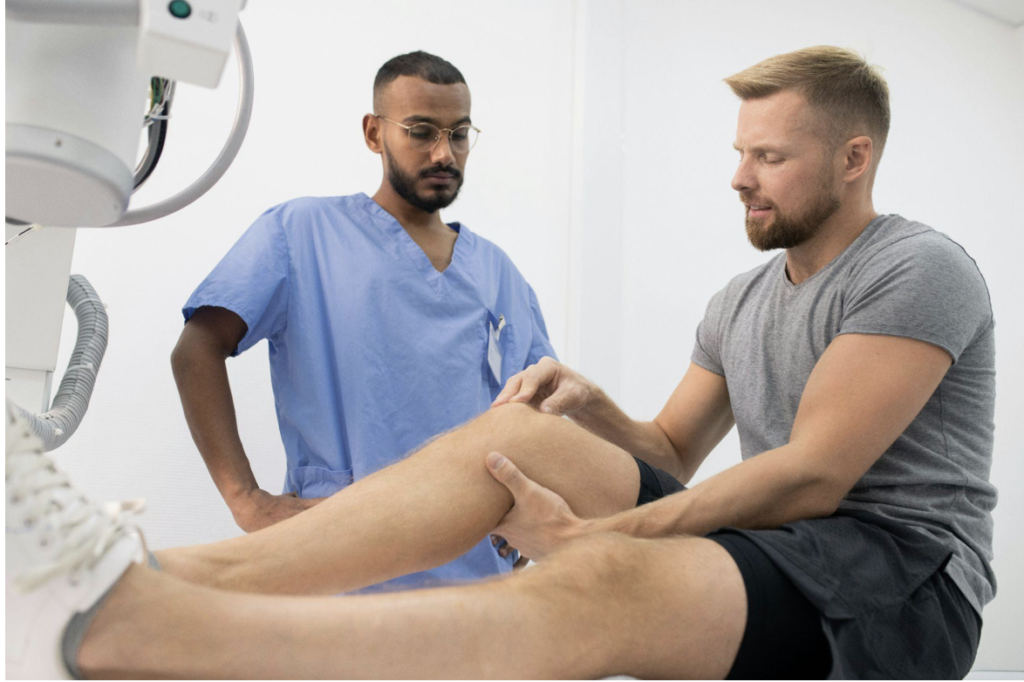Athlete-clinicians face a complex balancing act as they juggle the demands of competitive sports with the responsibilities of patient care. These dual-role professionals operate in fast-paced environments where time is often scarce, and efficiency is everything. Clinical documentation, while essential, can be one of the most time-consuming aspects of the job. Integrating AI into this workflow is not just a matter of convenience—it’s a strategic move that supports both professional performance and personal well-being.
As explained by Dr. Scott Saffold, AI tools are changing the game by reducing the burden of administrative tasks, allowing athlete-clinicians to stay focused on what truly matters: providing quality care and maintaining peak physical condition. Through real-world applications and tailored features, AI solutions are becoming indispensable in the daily routines of those who straddle the line between medicine and sport.
Balancing Two Demands: The Athlete-Clinician Identity
Merging the physical demands of athletic training with the responsibilities of clinical care creates a unique set of challenges. Athlete-clinicians often navigate tight schedules, shifting priorities, and the need to maintain peak performance in both areas. This dual role requires precision, discipline, and adaptability.
Managing patients, treatment plans, and follow-up care while maintaining a consistent training regimen can strain both time and mental clarity. A sports medicine specialist who also competes may find themselves documenting a patient session minutes before heading to their own training. The overlap of roles increases the demand for efficient systems that don’t compromise quality. Over time, the mental toll of switching between these two high-stakes domains can lead to burnout without proper support.
Documenting Strains in Clinical Practice
Clinical documentation can easily consume a significant portion of a provider’s day. From intake notes to treatment summaries, the manual process often stretches into evenings, pulling time away from recovery, preparation, or personal commitments.
A physical therapist who divides time between treating patients and training for triathlons might find that note-taking cuts into recovery periods or disrupts concentration. Even short delays in documentation can lead to mental clutter and reduced focus during both clinical duties and workouts. The weight of ongoing administrative demands gradually erodes efficiency and well-being. In some cases, delayed documentation may also affect patient continuity and outcomes.
What AI Brings to Clinical Documentation
AI-driven documentation tools offer a shift from reactive record-keeping to proactive, streamlined workflows. Speech-to-text capabilities, predictive charting, and smart prompts adapt quickly to clinical language and patterns, minimizing the need for repetitive inputs. These tools can recognize context, anticipate entries, and reduce the friction of daily documentation.
By integrating with electronic health record systems, AI helps clinicians capture patient interactions more naturally, sometimes during the appointment itself. This means fewer after-hours tasks and more time to focus on care or recovery. The ability to customize templates and phrasing ensures each clinician’s style is preserved, even as speed improves.
Benefits of AI for the Athlete-Clinician
With AI handling the bulk of routine documentation, athlete-clinicians can redirect their energy toward patient care and physical performance. The reduction in screen time not only prevents cognitive overload but also helps preserve focus when transitioning between the clinic and the field.
A dual-role professional juggling patient appointments and evening training sessions may find that AI tools cut charting time in half. This leads to better rest, recovery, and sharper attention during workouts. The mental bandwidth reclaimed from administrative tasks becomes a valuable asset both in treatment rooms and during competition prep.
Over time, fatigue can positively impact job satisfaction and training consistency. The ability to complete notes quickly, accurately, and on the go allows athlete-clinicians to stay agile in both roles without sacrificing standards. Additionally, improved workflow tends to enhance patient experience, as clinicians can be more present and less distracted.
Applying AI Tools in Real-Life Scenarios
During travel for athletic events or between back-to-back appointments, mobile AI solutions can keep documentation up to date without requiring a laptop or office space. A sports chiropractor covering a tournament might dictate notes immediately after each session, using voice-enabled tools while walking to the next athlete.
AI-powered systems make it easier to maintain continuity of care without the lag of delayed charting. This is particularly valuable in high-paced settings where memory fades quickly and accuracy matters. Whether on the sidelines or in a hotel room, the ability to document in real time brings a level of flexibility that traditional methods struggle to match. These moments of seamless charting become crucial when clinicians are managing a full caseload while staying physically active.
Choosing the Right AI
Selecting the right AI platform begins with understanding daily workflows. Athlete-clinicians need tools that work fast, adapt to sports medicine terminology, and don’t require steep learning curves. Seamless compatibility with existing EHR systems ensures that integration doesn’t become another hurdle.
Security is non-negotiable. A reliable AI solution must meet healthcare compliance standards while offering strong encryption and user controls. Ongoing updates and responsive support also play a pivotal role in long-term usability, especially as needs change with the clinician’s schedule and the demands of athletic performance.

